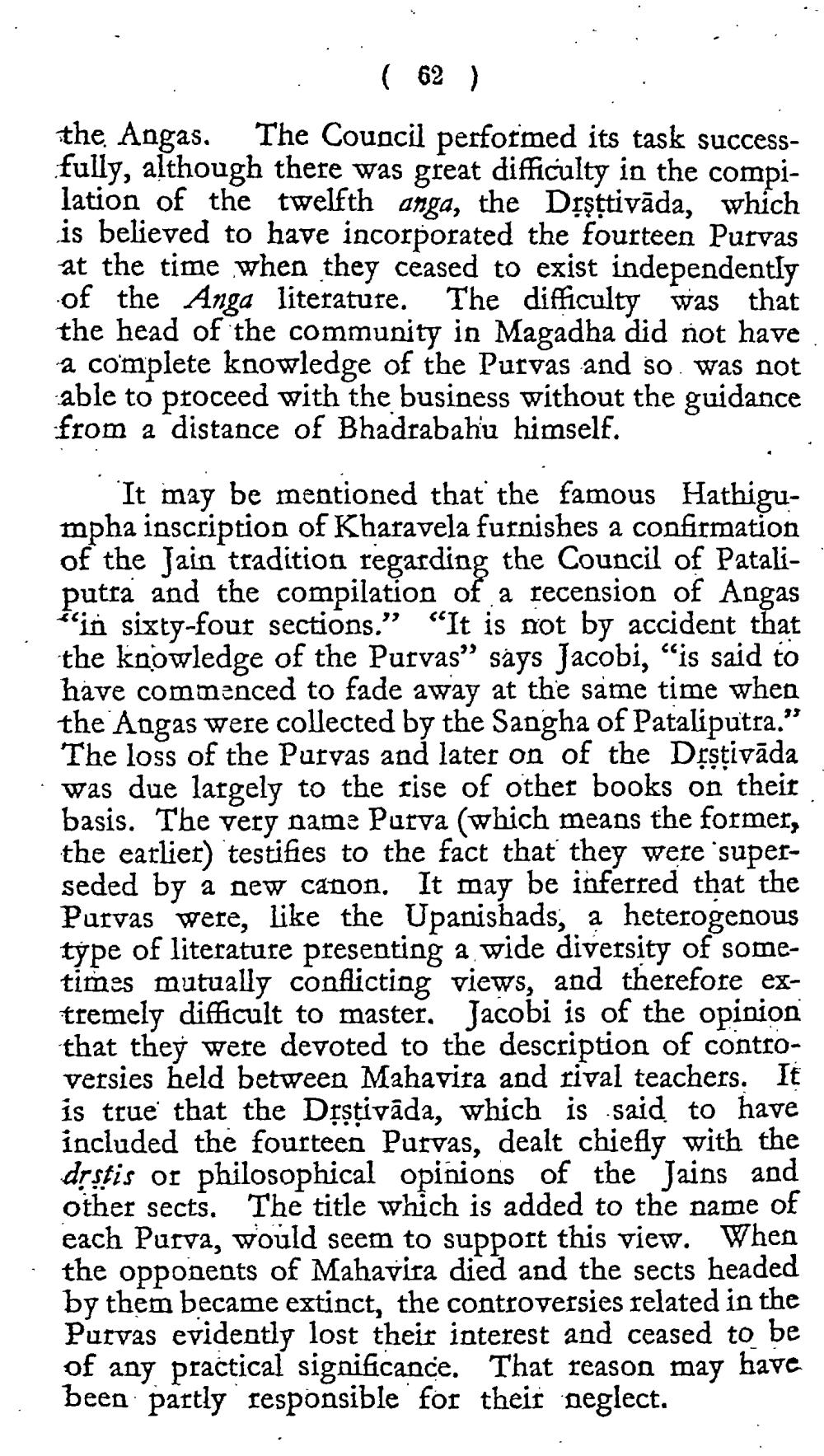________________
( 62 )
the Angas. The Council performed its task successfully, although there was great difficulty in the compilation of the twelfth anga, the Dışttivāda, which is believed to have incorporated the fourteen Purvas at the time when they ceased to exist independently of the Anga literature. The difficulty was that the head of the community in Magadha did not have a complete knowledge of the Purvas and so. was not able to proceed with the business without the guidance from a distance of Bhadrabahu himself.
It may be mentioned that the famous Hathigumpha inscription of Kharavela furnishes a confirmation of the Jain tradition regarding the Council of Pataliputra and the compilation of a recension of Angas
in sixty-four sections." "It is not by accident that the knowledge of the Purvas” says Jacobi, “is said to have commenced to fade away at the same time when the Angas were collected by the Sangha of Pataliputra." The loss of the Purvas and later on of the Dşstivāda was due largely to the rise of other books on their basis. The very name Purva (which means the former, the earlier) testifies to the fact that they were superseded by a new canon. It may be inferred that the Purvas were, like the Upanishads, a heterogenous type of literature presenting a wide diversity of sometimes mutually conflicting views, and therefore extremely difficult to master. Jacobi is of the opinion that they were devoted to the description of controversies held between Mahavira and rival teachers. It is true that the Dřstivāda, which is said to have included the fourteen Purvas, dealt chiefly with the dsstis or philosophical opinions of the Jains and other sects. The title which is added to the name of each Purva, would seem to support this view. When the opponents of Mahavira died and the sects headed by them became extinct, the controversies related in the Purvas evidently lost their interest and ceased to be of any practical significance. That reason may have been partly responsible for their neglect.




